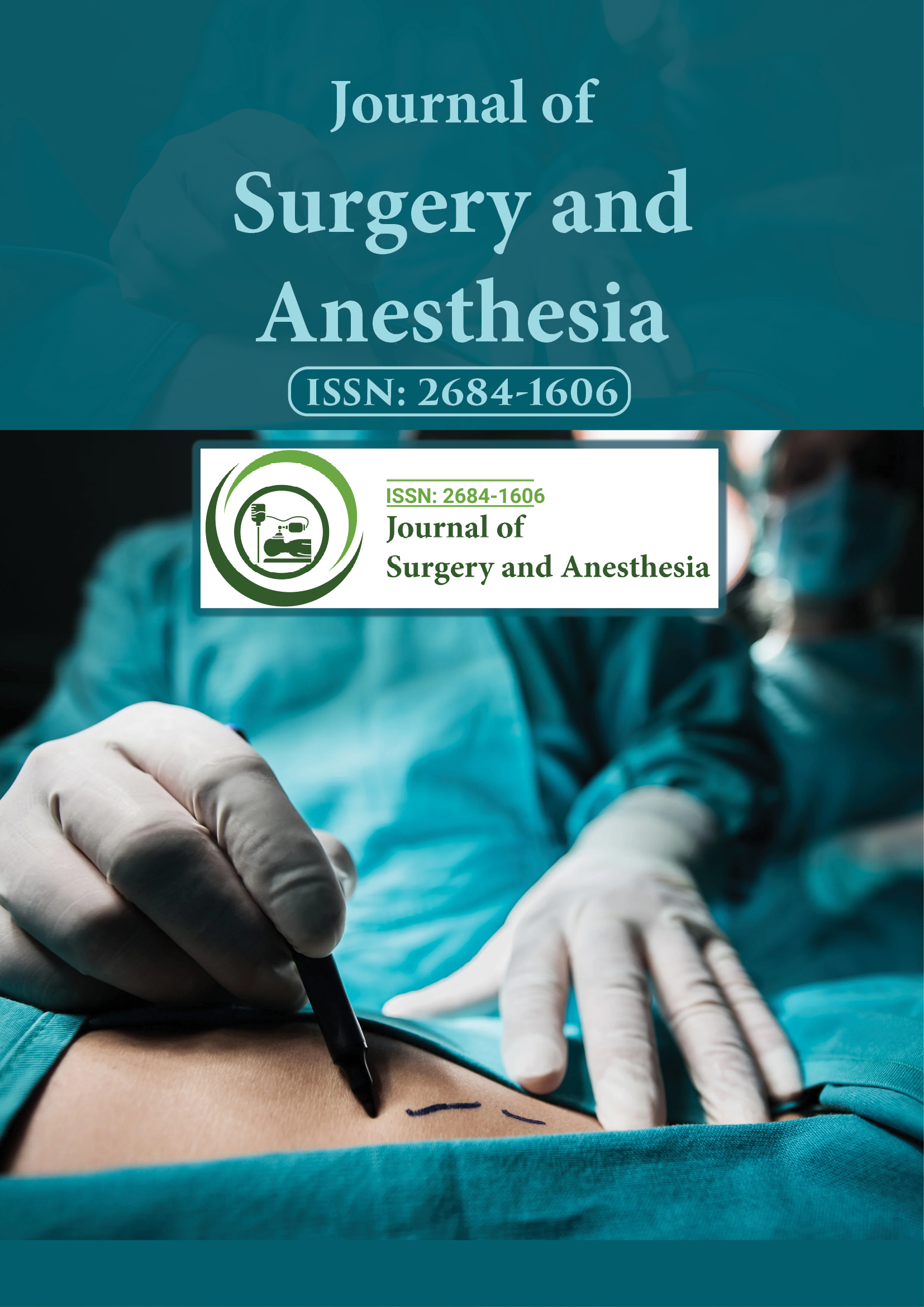Indexed In
- Google Scholar
Useful Links
Share This Page
Journal Flyer

Open Access Journals
- Agri and Aquaculture
- Biochemistry
- Bioinformatics & Systems Biology
- Business & Management
- Chemistry
- Clinical Sciences
- Engineering
- Food & Nutrition
- General Science
- Genetics & Molecular Biology
- Immunology & Microbiology
- Medical Sciences
- Neuroscience & Psychology
- Nursing & Health Care
- Pharmaceutical Sciences
Perspective - (2024) Volume 8, Issue 3
The Clinical Role of Mitral Valve Surgery in Preventing Heart Failure
Mabision Laddiel*Received: 26-Aug-2024, Manuscript No. JSA-24-27052; Editor assigned: 28-Aug-2024, Pre QC No. JSA-24-27052 (PQ); Reviewed: 11-Sep-2024, QC No. JSA-24-27052; Revised: 19-Sep-2024, Manuscript No. JSA-24-27052 (R); Published: 26-Sep-2024, DOI: 10.35248/2684-1606.24.8.261
Description
Mitral valve surgery plays a major role in addressing disorders of the mitral valve, a vital structure in the heart responsible for controlling blood flow between the left atrium and the left ventricle. The mitral valve can be compromised by a range of conditions, including mitral valve prolapse, mitral regurgitation and mitral stenosis. These issues can lead to heart failure, arrhythmias and other serious complications if left untreated. Various surgical approaches are used to repair or replace the mitral valve, depending on the nature and severity of the condition. This article will discuss the different methods of mitral valve surgery, including open-heart surgery, minimally invasive procedures and emerging technologies, while considering the factors that influence surgical decisions and outcomes.
The mitral valve's function is to ensure that blood flows in a one-way direction from the left atrium to the left ventricle. When the valve fails to close properly, blood can leak backward into the atrium, a condition known as mitral regurgitation. In contrast, mitral stenosis occurs when the valve's opening becomes narrowed, obstructing blood flow into the left ventricle. Both conditions place significant strain on the heart, eventually leading to complications such as heart failure, atrial fibrillation and pulmonary hypertension.
Patients with significant mitral valve disorders often require surgical intervention. The choice of treatment depends on various factors, including the severity of the condition, the patient’s overall health and the risks associated with surgery. Surgical options for mitral valve disorders include mitral valve repair and mitral valve replacement, each with its own benefits and challenges. Mitral valve repair is often the preferred option for treating conditions such as mitral valve prolapse or mitral regurgitation. Repairing the patient’s native valve, rather than replacing it, preserves the natural structure of the heart, which can lead to better long-term outcomes. This procedure can involve several techniques, including annuloplasty, leaflet resection and chordal replacement. Annuloplasty involves the implantation of a ring or band around the base of the mitral valve, known as the annulus. This ring restores the annulus to its normal size and shape, allowing the leaflets of the valve to close more effectively and prevent regurgitation. Leaflet resection is a technique used to address excess tissue in the valve leaflets, which can cause them to prolapse into the left atrium. During this procedure, a portion of the prolapsed leaflet is removed and the remaining tissue is sewn together to create a more functional valve. Chordal replacement involves replacing or shortening the chordae tendineae, the fibrous cords that connect the valve leaflets to the heart muscle. When these cords become stretched or ruptured, they can cause the leaflets to malfunction, leading to mitral regurgitation. Replacing or adjusting the chords can restore proper valve function.
Mitral valve repair is generally associated with lower operative risks compared to valve replacement and patients tend to experience better long-term survival and fewer complications. The repair option is particularly effective in younger patients and those with degenerative valve disease. However, not all patients are candidates for repair, particularly if the valve is severely damaged or if there is significant calcification. For patients whose mitral valves are too damaged to be repaired, mitral valve replacement is the preferred approach. In this procedure, the damaged valve is removed and replaced with either a mechanical valve or a bioprosthetic valve made from animal tissue.
Mechanical valves are made from durable materials, such as titanium or carbon and are designed to last a lifetime. One of the main benefits of mechanical valves is their longevity, as they typically do not need to be replaced. However, patients with mechanical valves are required to take lifelong anticoagulant medications to prevent blood clots, which can form on the valve and lead to serious complications such as stroke or heart attack. Bioprosthetic valves are made from animal tissue, typically derived from cows or pigs. While bioprosthetic valves do not require long-term anticoagulation therapy, they tend to have a shorter lifespan than mechanical valves. Over time, bioprosthetic valves can degenerate and patients may need additional surgeries to replace the valve in the future.
The choice between a mechanical valve and a bioprosthetic valve depends on various factors, including the patient’s age, lifestyle and ability to tolerate anticoagulant therapy. Younger patients may be more suitable for mechanical valves due to their durability, while older patients or those unable to take blood-thinning medications may be better candidates for bioprosthetic valves.
Mitral valve surgery can be performed using traditional openheart surgery or minimally invasive techniques. The choice of approach depends on the complexity of the surgery, the patient's overall health and the surgeon's expertise.
Citation: Laddiel M (2024). The Clinical Role of Mitral Valve Surgery in Preventing Heart Failure. J Surg Anesth. 8:261.
Copyright: © 2024 Laddiel M. This is an open access article distributed under the terms of the Creative Commons Attribution License, which permits unrestricted use, distribution, and reproduction in any medium, provided the original author and source are credited.
